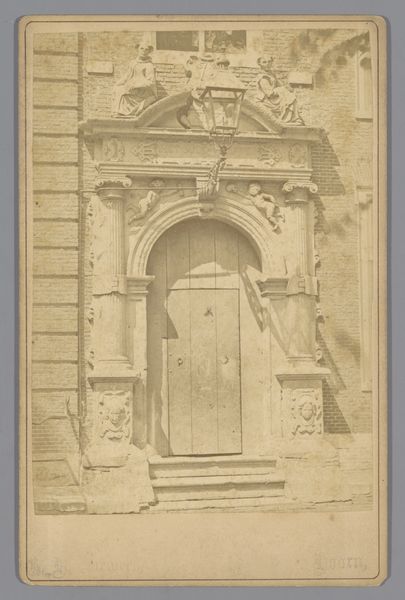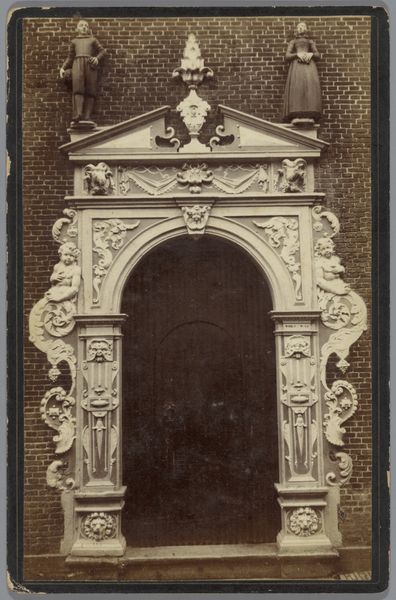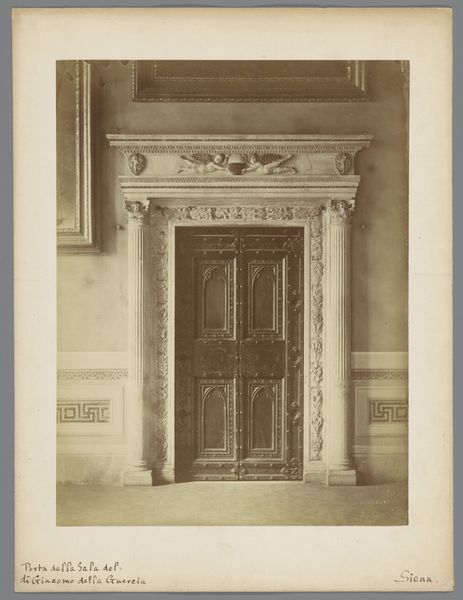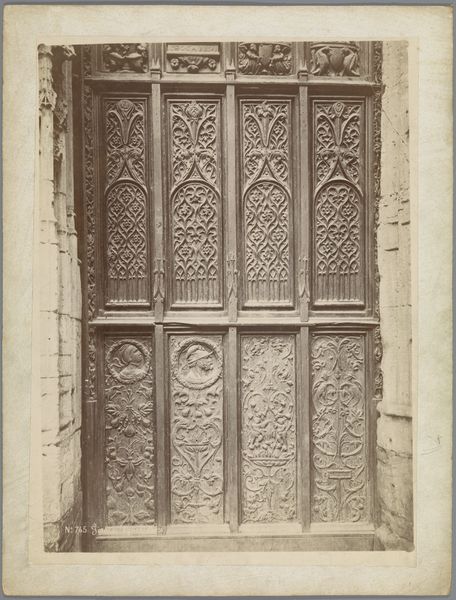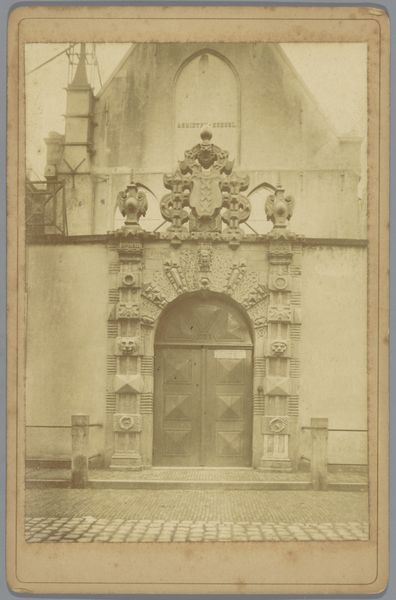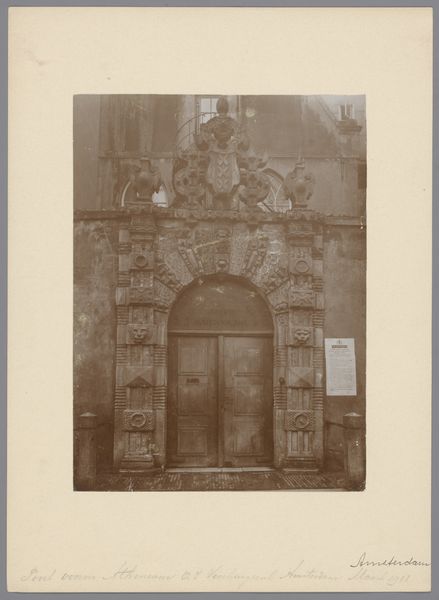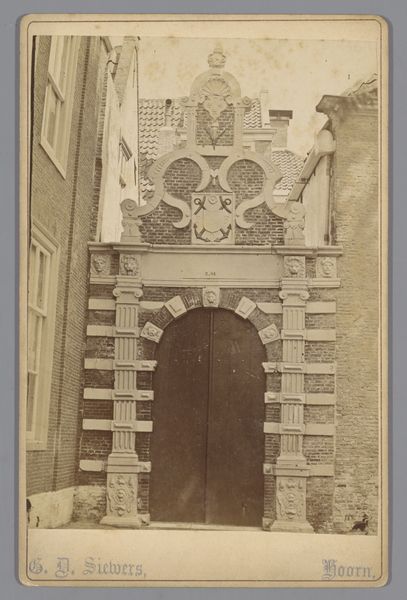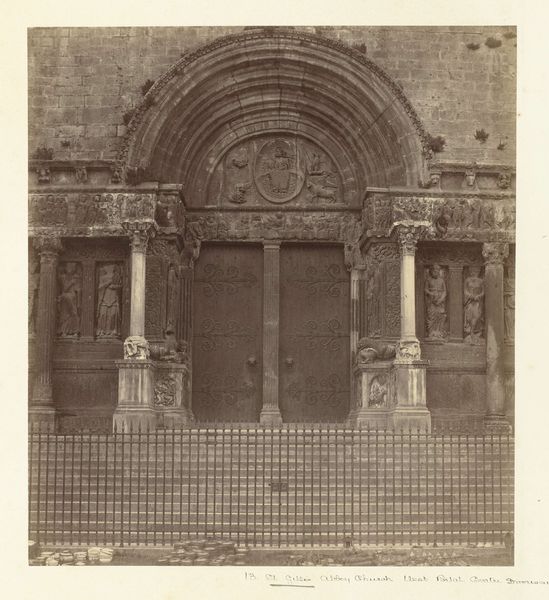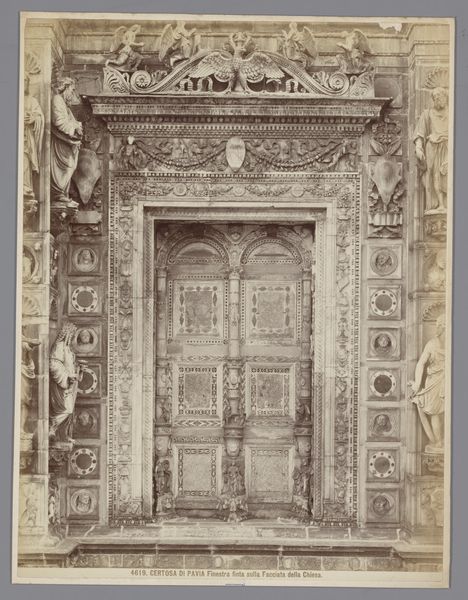
print, photography, gelatin-silver-print
# print
#
landscape
#
historic architecture
#
photography
#
romanesque
#
gelatin-silver-print
Dimensions: height 353 mm, width 251 mm
Copyright: Rijks Museum: Open Domain
Editor: This is a photograph by Médéric Mieusement, taken sometime between 1875 and 1900. It’s titled “Toegangsportaal van het Hôtel de Vogüé te Dijon,” which I believe translates to "Entrance Portal of the Hôtel de Vogüé in Dijon.” The building appears old, formal and very symmetrical. What’s striking to you about this image? Curator: What draws my eye are the repeated heraldic symbols carved above the doorway. Notice how the fleurs-de-lis appear, subtly embedded in the stonework, signaling power and prestige. How do you think those emblems function here, so long after the medieval period that saw their first use? Editor: Well, the building looks old, but those symbols almost feel… intentionally archaic? Maybe a family was trying to give off the air of having deep historical roots, even if that wasn’t exactly true? Curator: Precisely. Think of heraldry not just as a family crest, but as a carefully constructed image. Each lion, each flower, is a calculated statement, a piece of visual rhetoric aimed at shaping perceptions of the family’s status and pedigree. What story do you think the Vogüé family was hoping to tell? Editor: A story of longevity and legitimacy, I suppose. Like they were always meant to be there, important members of that community. Curator: Exactly! And the choice to photograph and reproduce the portal, highlights its continued cultural importance and the ongoing power of those carefully curated images. What does the photograph add to that narrative? Editor: Maybe it solidifies it? If it's captured on film, that cements it further into the visual culture of the area. That’s fascinating, seeing how even architecture uses imagery to speak volumes. Curator: Indeed! Every carefully placed symbol speaks to a carefully constructed identity, enduring across generations. It reminds me that objects tell the history of their owners.
Comments
No comments
Be the first to comment and join the conversation on the ultimate creative platform.

